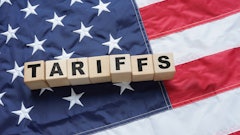Companies that reaped the benefits of reverse auctions in better times may have leveraged away the very supplier relationships that are becoming so critical now that supplies of many commodities are tightening.
[From Supply & Demand Chain Executive, October/November 2004] Back in the heyday of the dot-com boom, online reverse auctions appeared to many in the sourcing and purchasing world to be a valuable new tool for driving down the costs of a variety of commodity goods, from paper to plastic resins to steel. Suppliers wrung their hands, but buyers cheered this newfound mechanism for reaching "market price."
Now, however, the tables have turned. With China's rising economy placing increasing demands on the world's steel markets, for instance, suddenly steel supplies have tightened and prices have risen, as much as 30 to 45 percent or more in some cases. Price spikes, whether due to higher energy costs or supply issues, have hit other commodities as well, such as plastics, paper and some aluminum.
"All the major building blocks that companies use are way up in price," says Bill Michels, CEO of ADR North America, a supply chain consulting organization based in Ann Arbor, Mich. And companies are paying, too, Michels says. "It's a matter of having to give in to the price increase or not having supply."
Rising costs already are hitting the bottom line at many companies. The world's largest producer of home appliances, Sweden's Electrolux, for example, announced in September that higher steel prices would trim its profits by some $68 million in the second half of this year. The company's CEO pointed the finger directly at rising material costs and cited unprecedented increases in steel prices.
Michels points his finger, in part at least, at the reverse auction mentality that prevailed in many procurement organizations until quite recently. "In the good years, when people had leverage and were using auctions, they may have leveraged or auctioned their relationships away. But the relationships become very, very important in times of shortage, especially if things go on allocation in some categories."
Another factor: lack of long-term planning. "For the sake of some short-term gains, companies sometimes fail to look at the long-term," Michels says. "Many people look quarter-to-quarter and year-to-year, and they fail to have a two-, three- or five-year plan in place to forecast, for instance, what is going to happen in the steel market."
What's a company to do in the face of rising costs and shaky supplier relationships? First, Michels recommends that sourcing and procurement organizations start doing the hard work of long planning again. "You have to really analyze the supply market and all the suppliers in the market. And you really can't look just at the domestic market. You have to look at the global marketplace, because there's such an impact on all the raw materials now with the high degree of offshore sourcing."
In addition, Michels says that many companies have brought in his consulting firm to do development of sourcing and procurement staff to strengthen negotiation skills on the one hand, and strategic supplier relationship-building on the other. "We're really looking for our clients to develop more strategic relationships with key suppliers, getting to principal base pricing, and trying to recoup costs but also to keep a cap on what's happening in the marketplace if they can." This type of development could be particularly important for the long term, Michels adds, in organizations where the sourcing and procurement staff are relatively young and have not lived through times of higher inflation and tight supplies.
In the short-term, however, companies are coping with the challenges of the newly inflationary environment as best they can. "Most of the people that are experiencing these high price increases are scrambling just to get some control, to get some supply or try to get themselves stabilized," Michels concludes.















